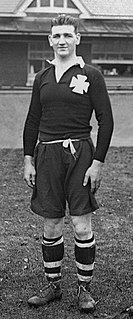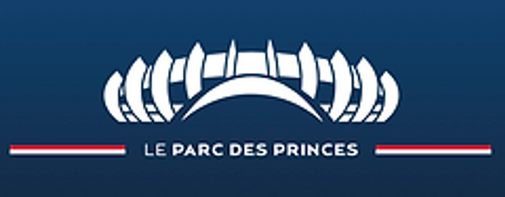The Welsh Rugby Union (WRU) is the governing body of rugby union in the country of Wales, recognised by the sport's international governing body, World Rugby.

Neath Rugby Football Club is a Welsh rugby union club which plays in the Welsh Premier Division. The club's home ground is The Gnoll, Neath. The first team is known as the All Blacks because of the team colours: black with only a white cross pattée as an emblem. Neath RFC is the oldest rugby club in Wales, having been formed in 1871. They are feeder club to the Ospreys regional team.
Aberavon RFC is a rugby union club located in the Welsh town of Port Talbot, though the club's name refers to the older settlement of Aberavon which lies on the western side of the town.
Chepstow Rugby Football Club is a rugby union team from the town of Chepstow, in Monmouthshire, Wales. The club is a member of the Welsh Rugby Union and is a feeder club for the Newport Gwent Dragons.

John Rees Glyn Stephens was a Welsh international number 8 who played club rugby for Tonmawr RFC and Neath. He won 32 caps for Wales and was selected to play in the British Lions on the 1950 tour of Australia and New Zealand. He was the son of a past Welsh rugby international, Glyn Stephens, who was also president of the Welsh Rugby Union.
Glyn Stephens was a Welsh international rugby union prop who played club rugby for Neath. He won 10 caps for Wales and captained his country. He was the father of Welsh rugby international, Rees Stephens and would later become president of the Welsh Rugby Union
Bert Hollingdale was a Welsh international rugby union forward who played club rugby for Swansea Rugby Football Club and was capped for Wales on two occasions. His younger brother Tom also played rugby, though he played for rival club Neath and had a more successful international career, representing Wales six times.

Tom Arthur was a Welsh international rugby union lock who played club rugby for Neath and was capped 18 times for Wales. A tough second row forward with a strong physique, Arthur was often criticised for being over-vigorous. Though his style of play was fairly typical for Welsh rugby at the time.
Glyn Prosser was a Welsh international rugby union flanker who played club rugby for Neath, and was capped four times for Wales. An aggressive wing forward, Prosser is best known for being a member of the Wales team that beat the touring New Zealanders in 1935.
Fred Leonard Perrett was a Welsh international rugby union prop who played club rugby for Neath. He won five caps for Wales, and in his first international game faced the touring South Africans.
David 'Dai' Hiddlestone was a Welsh international rugby union player who played club rugby for Neath. He was capped five times for Wales and was notable for leading an ill-advised response to the New Zealand Haka during the team's 1924 tour.

Dr. Edward Vernon Pegge was a Welsh international rugby union forward who played club rugby for Neath Rugby Football Club, international rugby for Wales and later became a vice-president of the Welsh Rugby Union. Pegge had an eccentric personality that made him a stand-out character of early Welsh rugby.
Samuel Simmonds Clark was an English-born rugby union official and international rugby union full-back who played club rugby for Neath. Clark was the first Neath player to win an international cap for Wales while representing the club; and played in the second Welsh international match in 1882.
Glyndwr "Glyn" Shaw is a Welsh dual-code international rugby union, and professional rugby league footballer who played in the 1970s and 1980s. He played representative level rugby union (RU) for Wales, and at club level for Neath RFC, as a prop, i.e. number 1 or 3, and representative level rugby league (RL) for Great Britain and Wales, and at club level for Widnes, Wigan, and Warrington, as a prop, or second-row, i.e. number 8 or 10, or, 11 or 12, during the era of contested scrums.

Howell Jones was a Welsh rugby union forward who played for the rugby club Neath and county rugby for Glamorgan. He gained just a single cap for the Wales national team in 1904. Jones came from a sporting family, and his son, Howie Jones, also represented Wales in the rugby union.
Arthur Hickman was a Welsh rugby union, and professional rugby league footballer who played in the 1930s. He played representative level rugby union (RU) for Wales, and at club level for Neath RFC, as a Wing, i.e. number 11 or 14, and club level rugby league (RL) for Swinton.
Thomas John Lloyd was a Welsh international, rugby union forward who played club rugby for Neath. He won seven international caps for Wales from 1909 to 1914; his last as part of the 'Terrible Eight', the Wales pack that played Ireland in a violent match before the First World War ended international competition.
James Birch was an English-born international rugby union prop who played club rugby for Northampton and Neath was capped twice for Wales. Birch was selected for Wales in a tit for tat reprisal by the Welsh Rugby Union after the Rugby Football Union selected Welshman Stanley Williams for England.

Glyn Davies was a Welsh international rugby union fly-half who played club rugby for a large selection of clubs but most notably for Pontypridd and Cambridge University. He won eleven international caps for Wales including a win over the touring 1947 Australia team. Described as a mercurial outside half, Davies was notable for his sidestep and ability to change pace and direction with ease.










